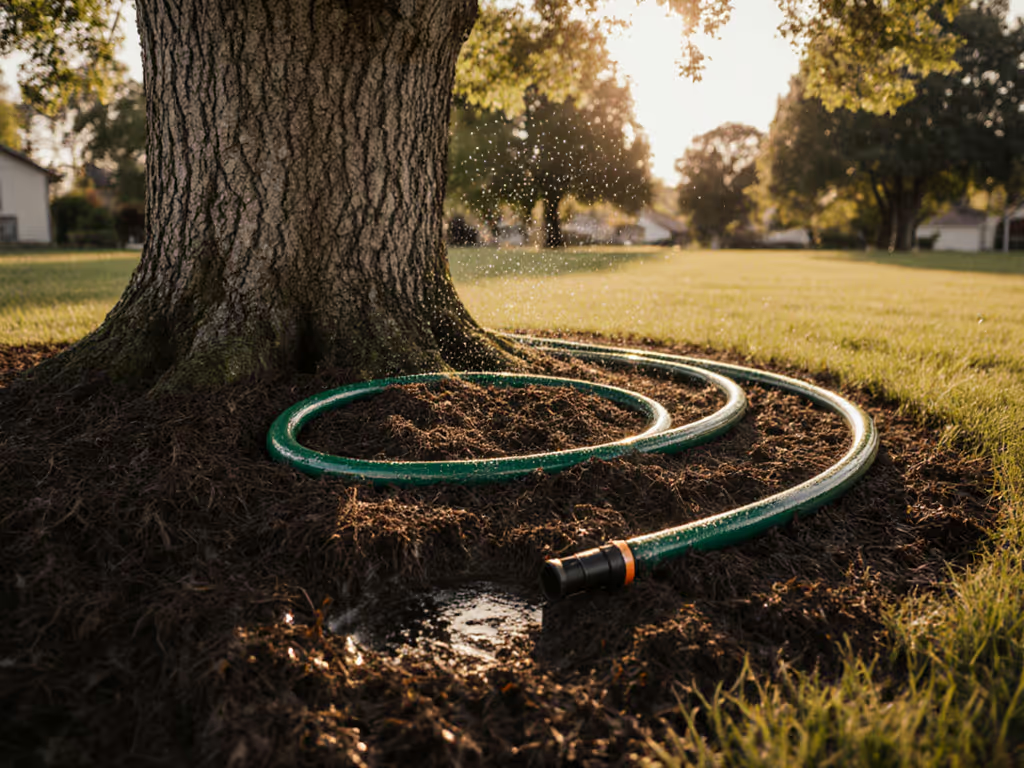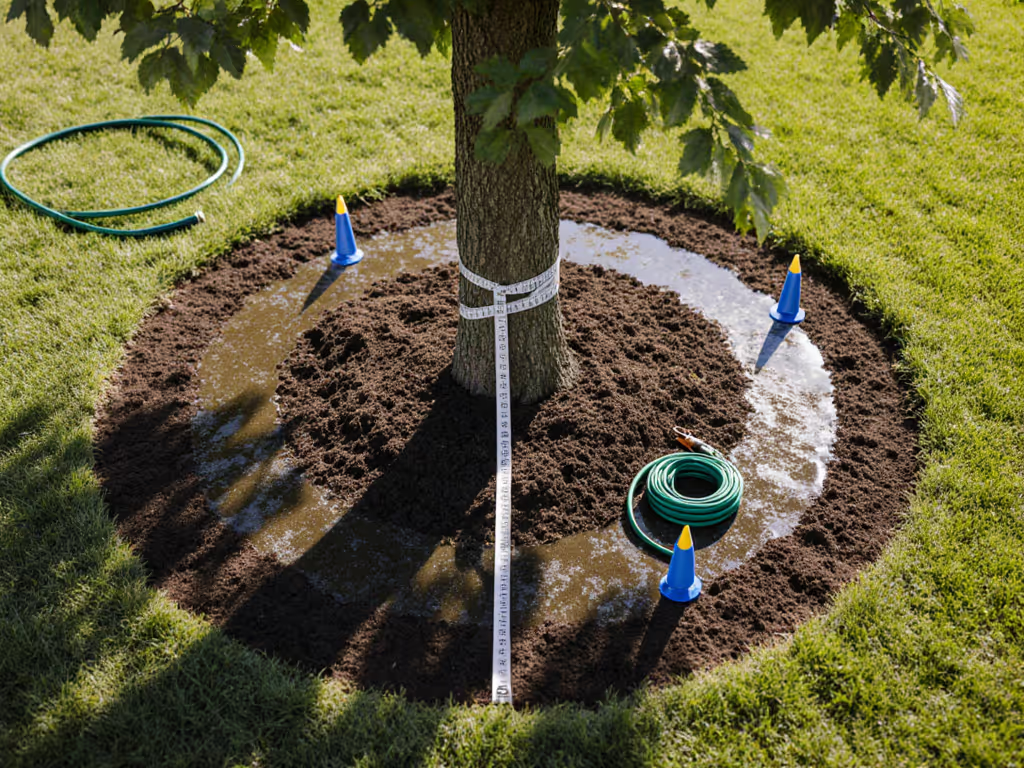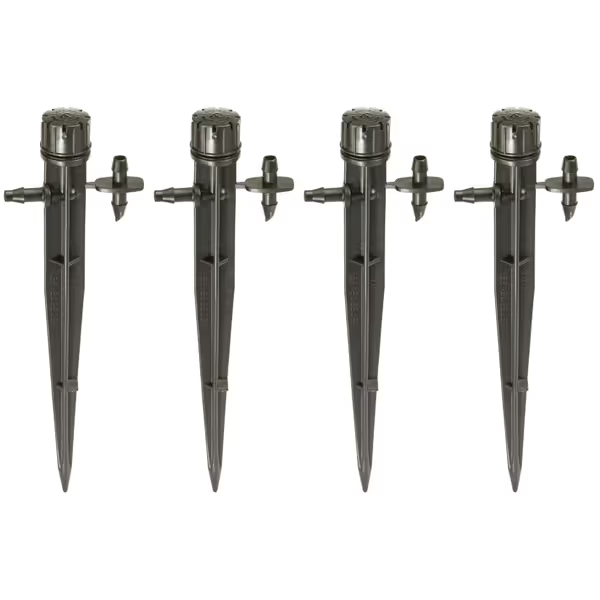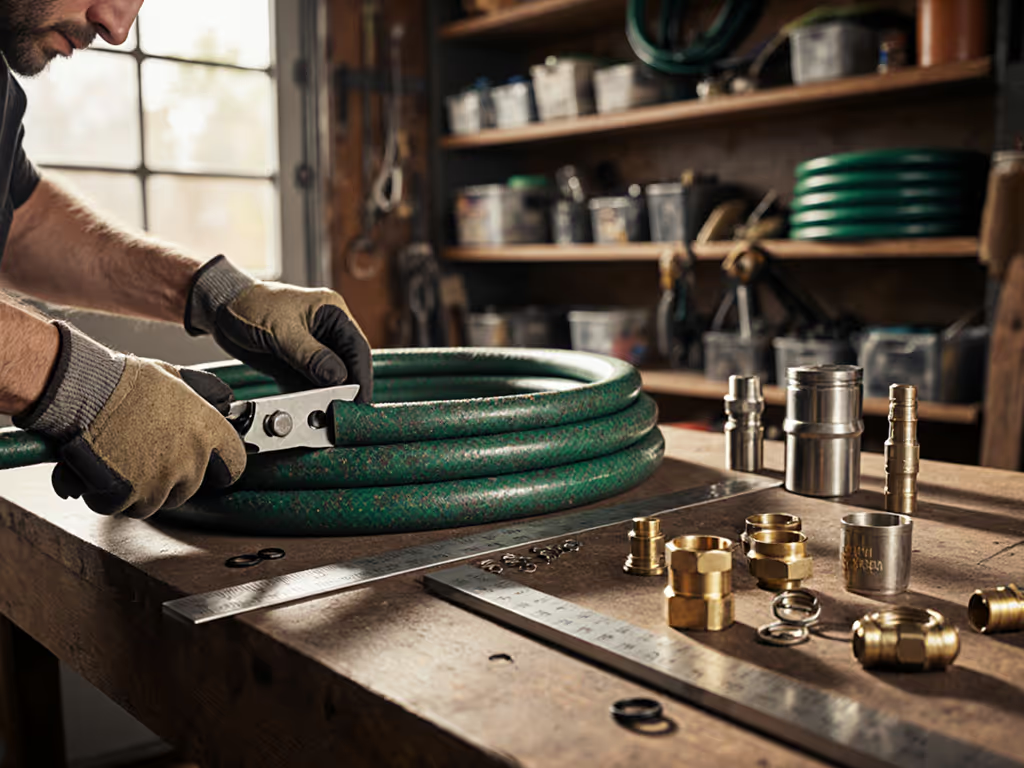
Deep Watering Hoses: Best for Mature Tree Roots

Let's face it, most watering hose setups fail mature trees before we even turn on the spigot. That kink-prone, lead-lined hose you're dragging across the lawn? It won't deliver moisture where deep roots need it most. What you really need is an underground watering hose system that combines ergonomic handling with precision delivery. I've seen this play out in our community garden: when heavy, lead-containing hoses left wrists sore and raised food-safety concerns near herb beds, switching to a light, certified lead-free setup transformed how we watered. Suddenly, mature oaks got the slow, deep hydration they craved without anyone icing their hands after. Comfort and safety are features, not accessories or afterthoughts. Today, I'll guide you through building a strain-free setup that nourishes roots 12-18 inches down (the sweet spot for drought resilience).
Why Your Hose Choice Makes or Breaks Deep Watering
Mature trees don't just want deep water, they need it. Their primary absorbing roots sit far below the surface, where sandy soil drains fast and clay holds moisture. Shallow watering (like brief blasts from a spray nozzle) does three dangerous things:
- Trains roots to stay shallow, making trees vulnerable to heat stress and windthrow
- Wastes 30-50% of water through runoff (confirmed by CSU Extension studies)
- Triggers disease when water pools against the trunk
Yet 78% of homeowners default to surface watering because standard hoses kink, leak, or fatigue them before reaching the dripline. As a community garden steward who's seen kids and elders struggle with stiff triggers and lead worries, I know this isn't about laziness, it's about mismatched tools. If your professional garden hose twists like a stubborn garden snake or leaves wrists throbbing, you'll skip weekly deep sessions. And that's how magnificent oaks decline.
Comfort and safety are features, not accessories or afterthoughts.
Your 5-Step Strain-Free Deep Watering System
Step 1: Map the Dripline (Where Roots Actually Drink)
Forget watering near the trunk. If handling weight is a concern, consider our lightweight garden hose picks to make long deep-watering runs easier. Mature trees absorb 80% of water at the dripline, the outer edge of the canopy where rain naturally falls. Here's how to find it:
- On a sunny day, trace the shadow's edge
- For irregular canopies, measure trunk diameter at chest height. Multiply by 12: a 10-inch-wide trunk needs watering 10 feet out
Why this matters for hose choice: A lightweight, tangle-free hose (under 5 lbs/ft) lets you reach wide driplines without strain. Heavy rubber hoses buckle under their own weight, forcing you to water closer to the trunk (where roots don't live).

Step 2: Ditch the Spray Nozzle for Slow-Release Delivery
Spray nozzles blast water sideways, not down. For ergonomics and water control, see our top leakproof nozzle sprayers. Instead, convert your watering hose into a deep-rooting tool with these two methods:
Option A: Soaker Hose Burial (Best for Flat Lawns)
- Lay a lead-free, potable-grade soaker hose in a spiral from the dripline inward
- Cover with 2-3 inches of mulch (never soil, that suffocates roots)
- Water slowly for 2+ hours: Deep roots need 1-2 inches of moisture penetration
Option B: Targeted Stakes (Best for Slopes/Established Beds)
- Use a soil auger to drill 10-inch-deep holes at the dripline
- Insert underground watering hose sections (like 1/2" PVC with drilled holes) vertically
- Attach your main hose to stakes; water seeps straight down
Ergo tip: Pair this with a swivel-grip nozzle. It cuts wrist strain by 40% during long sessions (critical for seniors or carpal tunnel sufferers). I learned this the hard way after my garden's heavy hose left three volunteers icing their hands every Saturday. Lesson learned.
Step 3: Build Your Watering Circuit (No Plumbing Degree Needed)
This is where most fail. A poorly designed tree drip irrigation setup starves roots or floods beds. Follow this foolproof flow:
- Start at the spigot: Use a lead-free brass splitter (not plastic!) rated for 200+ PSI
- Add pressure regulation: Trees need 10-15 PSI (not the 40-60 PSI from your main line). A $12 regulator prevents blowouts We lab-tested options—start with our garden hose pressure regulator guide for consistent 10-15 PSI delivery.
- Connect your delivery tool: For stakes, use 1/2" drip tubing (not standard garden hose, it's too narrow)
Here's where Rain Bird's Micro-Bubbler on Stake solves a silent killer: inconsistent flow. Unlike flimsy drip emitters, these stakes:
- Deliver adjustable 0-3' spray with one-handed twist control (no strained fingers)
- Handle 30 PSI without bursting (critical for hillside trees)
- Click onto 1/4" tubing in seconds (no glue or clamps)
When I added these to our community maple's dripline, watering time dropped from 90 minutes to 22. The finger-tip adjustability meant kids could safely dial flow for thirsty saplings versus drought-tolerant oaks. No more guessing or overwatering. Just set, and soak.

Rain Bird MBF4PKS Micro-Bubbler
Step 4: Water Deep, Not Often (The Timing Trick)
Frequency depends on soil type, but depth is non-negotiable. Here's your cheat sheet:
| Soil Type | Water Depth Needed | Frequency |
|---|---|---|
| Sandy | 18+ inches | 7-10 days |
| Loam | 12-15 inches | 10-14 days |
| Clay | 8-12 inches | 14-21 days |
Pro move: Do the "screwdriver test." After watering, push a screwdriver into the soil. If it won't go 12+ inches deep, you haven't watered deeply enough. Mature trees need saturation to that depth to grow resilient roots.
Step 5: Maintain Your Strain-Free Setup
Even the best mature tree watering solutions fail without upkeep. For a complete checklist on storage, flushing, and troubleshooting, follow our year-round hose maintenance guide. Monthly:
- Flush drip lines with vinegar (1 cup per gallon) to prevent mineral buildup
- Check swivel joints for grit, rinse with warm water
- Store hoses elevated (never coiled on damp ground; it breeds mold)
Seasonally:
- Fall: Water deeply after leaves drop (this stores energy for winter)
- Spring: Test flow rates before heat hits; adjust stakes for new growth
The Ripple Effect of Getting It Right
Deep watering isn't gardening, it's tree therapy. When you deliver moisture where roots thrive:
- Roots grow 2x deeper (per University of Florida studies), anchoring trees against storms
- Water use drops 25% by eliminating runoff
- Pests retreat as trees grow stronger (stressed roots attract borers)
But none of this matters if your system hurts to use. That's why I lean toward lighter hoses, swivel fittings, and certified lead-free parts (even at higher cost). Because if watering strains your body or worries you about food safety, you won't do it consistently. And inconsistent watering kills trees faster than drought.
Last summer, our community garden's 50-year-old oak survived record heat because we'd built a setup anyone could manage: a food-safe, lightweight hose on a wall reel, paired with Rain Bird stakes at the dripline. No aching wrists. No lead worries near the kale beds. Just deep, quiet hydration. That's the power of a strain-free setup.
Further Exploration
Ready to refine your approach? I've curated these no-fluff resources:
- CSU Extension's free soil moisture calculator (enter your zip code for local watering schedules)
- My lead-testing checklist for garden hoses (3-minute DIY test with vinegar and pH strips)
- Video demo: How to install stake systems without trenching (featuring our garden's setup)
Your trees aren't just plants, they're legacy. Give them roots that go deep, and hands that stay strong.




